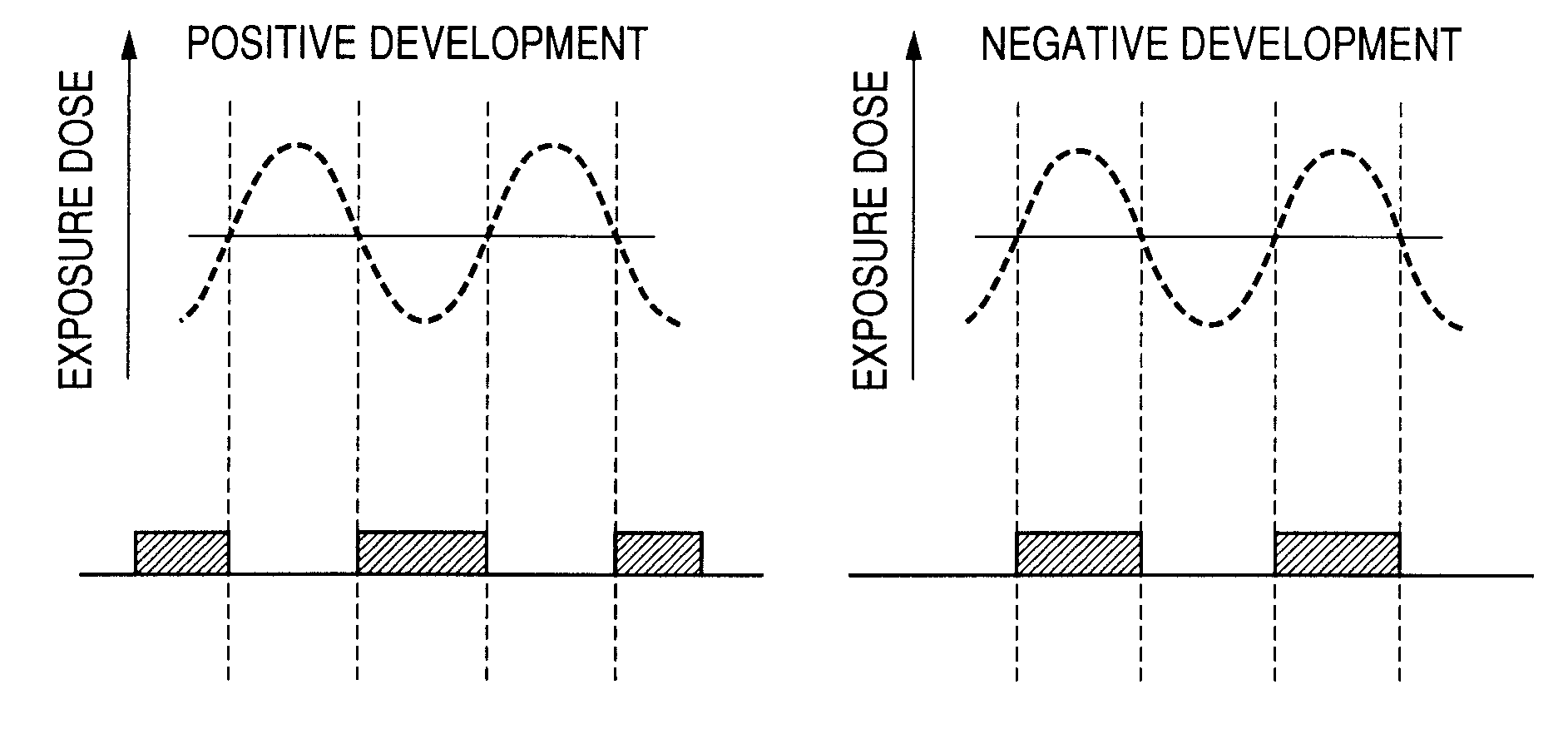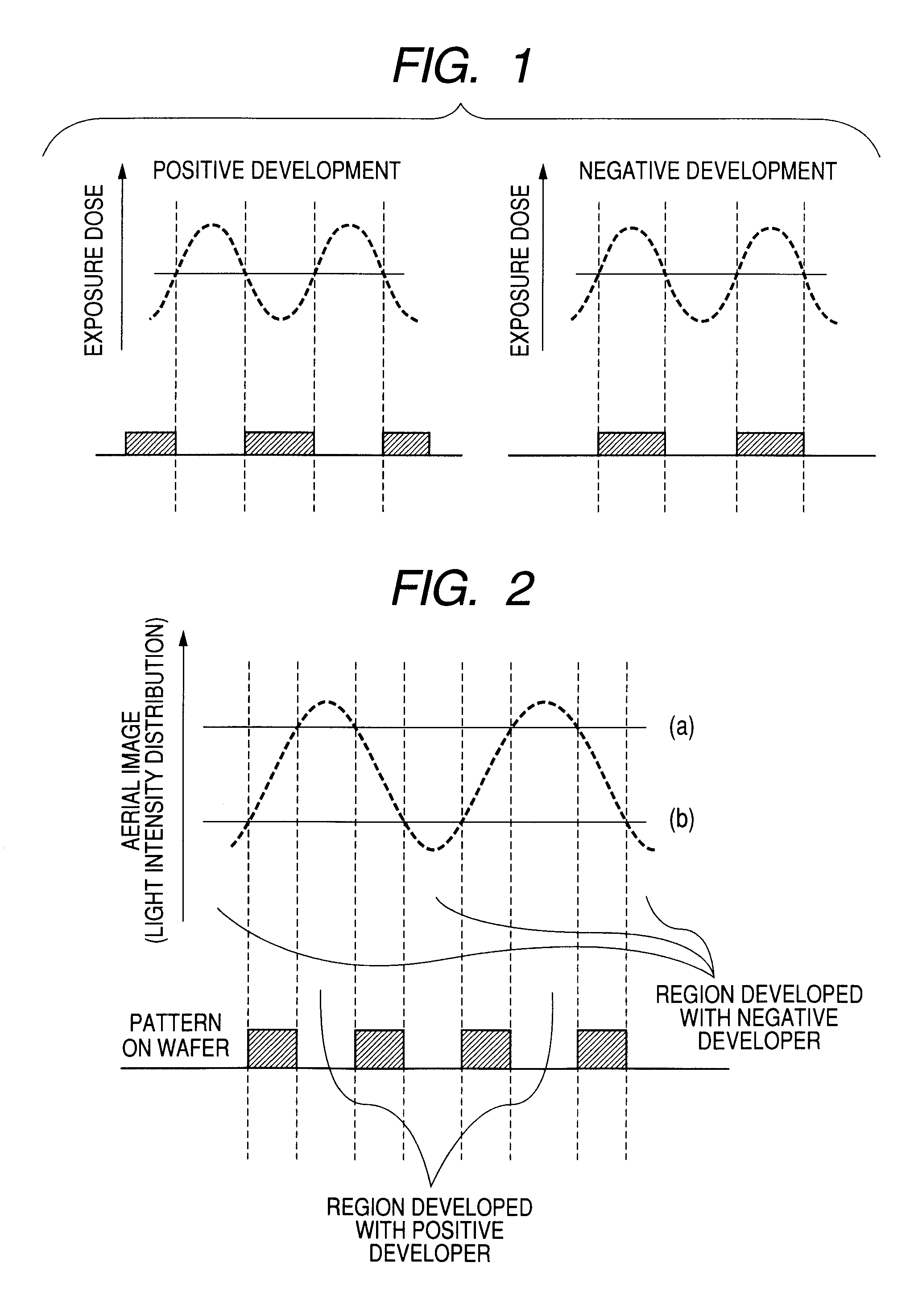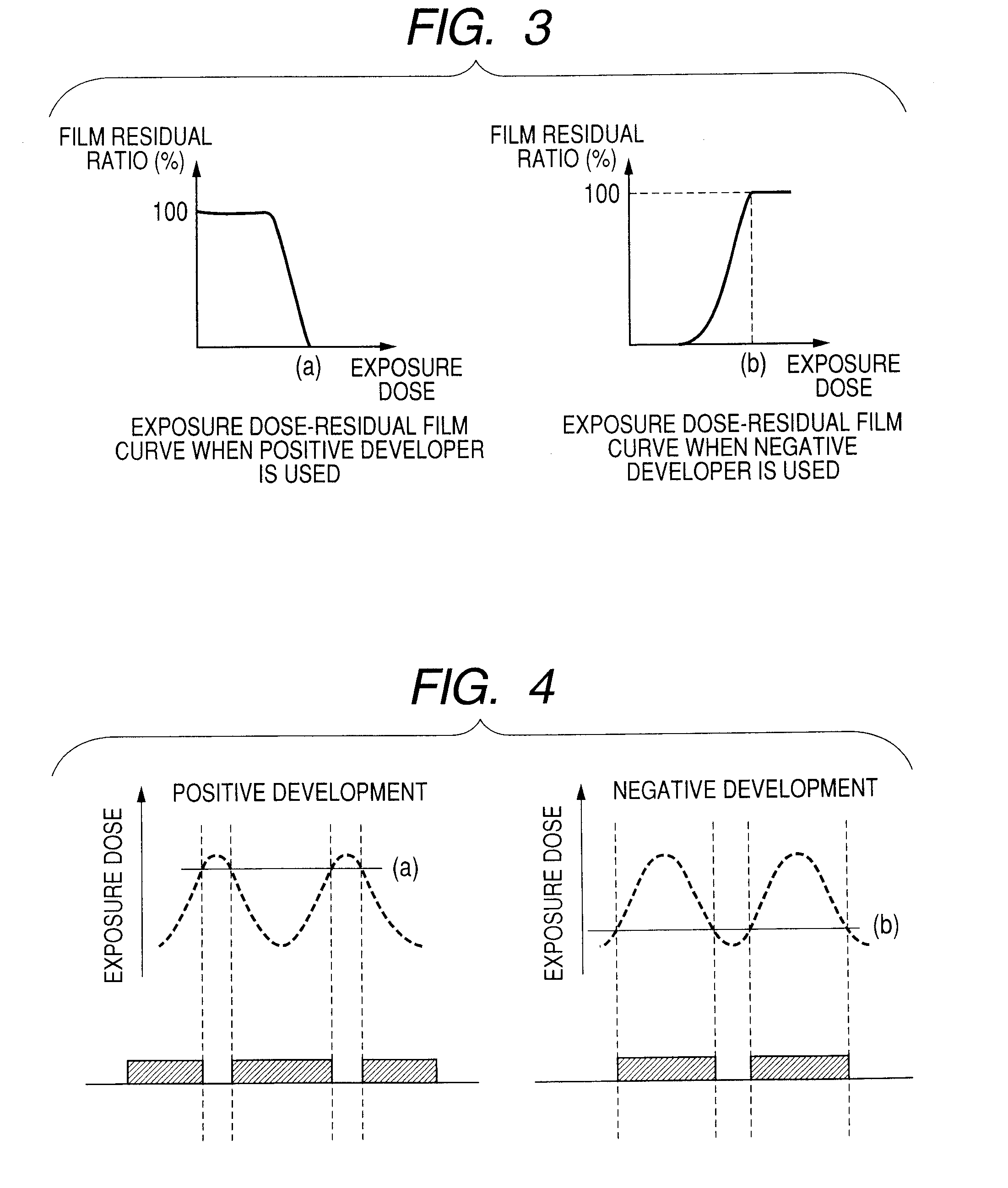Pattern forming method, resist composition for multiple development used in the pattern forming method, developer for negative development used in the pattern forming method, and rinsing solution for negative development used in the pattern forming method
a pattern forming and composition technology, applied in the field of pattern forming methods, can solve the problems of reducing optical contrast, inability to obtain sufficient exposure margin or focal depth, etc., and achieve the effect of high precision and integrated electronic technology
- Summary
- Abstract
- Description
- Claims
- Application Information
AI Technical Summary
Benefits of technology
Problems solved by technology
Method used
Image
Examples
example 1
[0681]An organic antireflection film, ARC29A (produced by Nissan Chemical Industries, Ltd.), was coated on a silicon wafer by a spin coater and baked at 205° C. for 60 seconds to form a 78-nm antireflection film, and a commercially available product, FAiRS-9101A12 (an ArF positive resist composition, produced by FUJIFILM Electronic Materials Co., Ltd.), was coated thereon and baked at 100° C. for 60 seconds to form a 150-nm resist film. The obtained wafer was subjected to pattern exposure at 25 [mJ / cm2] by using an ArF excimer laser scanner (NA: 0.75). Thereafter, the resist film was heated at 120° C. for 60 seconds, developed with butyl acetate (negative developer) for 30 seconds (negative development), and rinsed with decane for 30 seconds to obtain a resist pattern having a pitch of 200 nm and a line width of 100 nm.
synthesis example 1
Synthesis of Resin (A1)
[0682]Under a nitrogen stream, 8.4 g of methyl isobutyl ketone was charged into a three-neck flask and heated at 80° C. Thereto, a solution obtained by dissolving 9.4 g of 2-cyclohexylpropan-2-yl methacrylate, 4.7 g of 3-hydroxy-1-adamantyl methacrylate, 6.8 g of β-methacryloyloxy-γ-butyrolactone and azobisisobutyronitrile corresponding to 6 mol % based on the entire monomer amount, in 75.3 g of methyl isobutyl ketone was added dropwise over 6 hours. After the completion of dropwise addition, the reaction was further allowed to proceed at 80° C. for 2 hours. The resulting reaction solution was left standing to cool and then, poured in 720 ml of heptane / 80 ml of ethyl acetate, and the powder precipitated was collected by filtration and dried, as a result, 18.3 g of Resin (A1) was obtained. The weight average molecular weight of the obtained resin was 9,300 and the dispersity (Mw / Mn) was 1.98.
Positive Resist Composition (A):
[0683]A solution having a solid conten...
example 2
[0697]An organic antireflection film, ARC29A (produced by Nissan Chemical Industries, Ltd.), was coated on a silicon wafer and baked at 205° C. for 60 seconds to form a 78-nm antireflection film, and Positive Resist Composition (B) prepared above was coated thereon by a spin coater and baked at 100° C. for 60 seconds to form a 150-nm resist film. The obtained wafer was subjected to pattern exposure using an ArF excimer laser scanner (NA: 0.75). Thereafter, the resist film was heated at 120° C. for 60 seconds, developed with an aqueous tetramethylammonium hydroxide solution (2.38 mass %) (positive developer) for 30 seconds (positive development), and rinsed with pure water for 30 seconds to obtain a pattern having a pitch of 1,000 nm and a line width of 750 nm. Furthermore, the resist film was developed with a 2:3 (by mass) solution of butyl acetate / 2-hexanol (negative developer) for 30 seconds (negative development) to obtain a 250-nm (1:1) resist pattern.
PUM
| Property | Measurement | Unit |
|---|---|---|
| wavelength | aaaaa | aaaaa |
| solubility | aaaaa | aaaaa |
| threshold | aaaaa | aaaaa |
Abstract
Description
Claims
Application Information
 Login to View More
Login to View More - R&D
- Intellectual Property
- Life Sciences
- Materials
- Tech Scout
- Unparalleled Data Quality
- Higher Quality Content
- 60% Fewer Hallucinations
Browse by: Latest US Patents, China's latest patents, Technical Efficacy Thesaurus, Application Domain, Technology Topic, Popular Technical Reports.
© 2025 PatSnap. All rights reserved.Legal|Privacy policy|Modern Slavery Act Transparency Statement|Sitemap|About US| Contact US: help@patsnap.com



